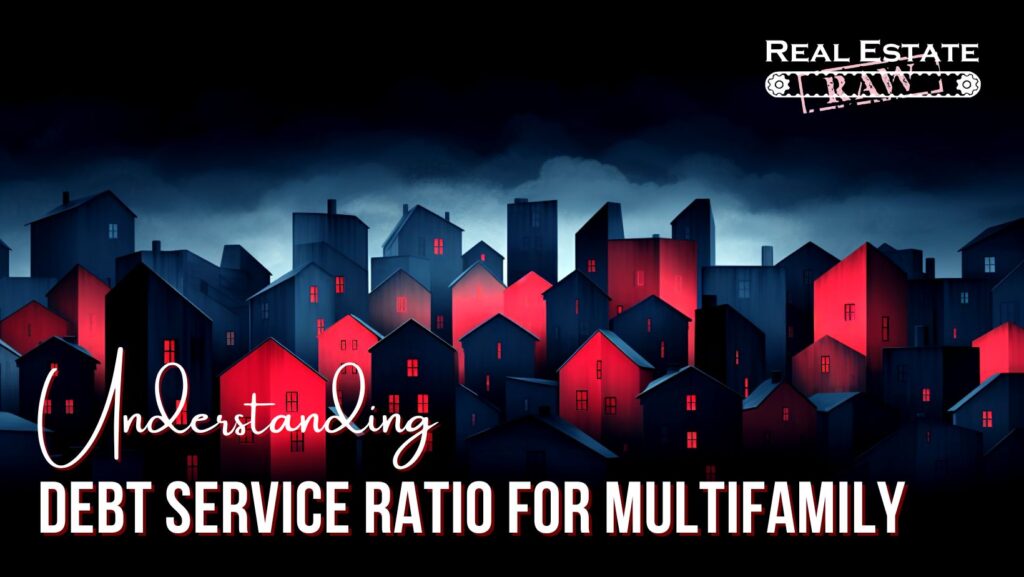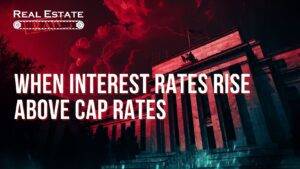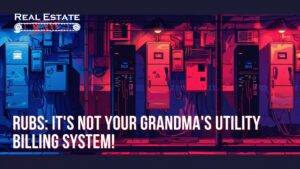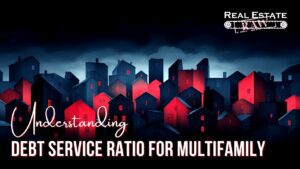When looking to buy an income producing asset such an apartment complex, the lender will likely be issuing a debt service coverage ratio loan (DSCR). This type of commercial lending will consider the borrower’s financial wherewithal but not in the same manner as a consumer loan. The asset that is backing the loan will be analyzed by the lender differently as well.
This form of commercial lending is often described as a balloon note/mortgage. Balloon notes and DSCR are separate concepts, but they are often part of the same debt structure.
For reference- here is the basic formula for evaluating a multifamily deal using the income approach.
Annual Rental Income – Annual Operating Expenses = Net Operating Income (NOI)
NOI – Annual Debt Service (mortgage payment) = Cash Flow
Cash Flow / Acquisition Costs (downpayment and repair costs) = Cash on Cash (Coc)
Now that you have the basic formula for analyzing a multifamily asset let’s take a closer look at the DSCR calculation. This is going to be one of the most important aspects of the lender’s analysis of the property’s financial operations.
Why does a lender use DSCR to value a deal?
The reason lenders use this formula is to calculate the financial ability and probability of the subject property to pay the annual mortgage. In a consumer loan the lender looks at your personal income to cover the majority of the annual debt service but in commercial lending the lender uses the debt service coverage ratio to decide the risk of repayment.
Most traditional lenders like Fannie Mae (FNMA) and Freddie Mac (FHLMC) will typically require a 1.25% DSCR. This means that the lender will want to see that you have $1.25 in net operating income for every $1.00 of annual mortgage payment. 1.25 DSCR. Keep in mind that each lender, borrower, and asset are different.
DSCR will be a major factor in the lender calculating the loan to value (LTV) for an asset.
LTV– is the percentage of leverage that a borrower can get against the value of the property. For example, if a property is worth $100,000 and a borrower can get an LTV of 75% then the lender would be lending $75,000 and the borrower would bring the $25,000 (downpayment).
A lender will use the subject properties DSCR to calculate your LTV. For this equation you need to use the purchase price you are paying for the property. Next calculate the NOI and the annual debt service (use a mortgage calculator).
Divide the annual NOI by the annual debt service. This will give you the DSCR. As stated, most traditional lenders will want to see that the property is producing a 1.25% ratio.
What if the sale price and the loan terms (interest rate) make the DSCR less than the acceptable ratio?
There are only two answers to this question. Pay less or borrow less.
There are three factors that go into determining the DSCR. Sales price, NOI, and annual debt service. Before you purchase (or take control of) the property you will not be able to increase the NOI.
Note- Increasing the net operating income is a function of increasing revenue or decreasing expenses. Neither of which can be implemented until after taking control of the asset. Interest rate has a great effect on the debt service as well, but this is not something that can be generally controlled.
This is the reason that I give the two options, “pay less” or “borrow less”. A lower LTV (more downpayment) or a lower purchase price will both result in an increase in the DSCR. These are two items that you can control before purchasing the asset.
Traditional lenders offering the average loan will be calculating the DSCR based on the sellers most recent financial data. This is most likely to be a profit and loss for the last 12 months (T12) and a current rent roll.
The following formula is how to calculate the downpayment for a multifamily loan.
Assuming the purchase price of the asset is fixed-
Income – Expenses = NOI
NOI / Annual debt service payment = Debt Service Coverage Ratio
If the DSCR is less than the acceptable ratio (probably 1.25%) then you must lower the loan amount which increases the down payment. Lower the LTV or “borrow less”.
If borrowing less is not an option, then the only other option is to pay less. Lower the purchase price until you calculate an acceptable DSCR.
This is how to estimate the amount of down payment for a multifamily property based on a lenders DSCR requirements. Keep the NOI and the Purchase price constant and adjust the LTV (down payment) until you get the acceptable DSCR. The answer is your estimated down payment.
Basically said, for a traditional loan you can expect a value (LTV) of about 1.25 DSCR based on the seller’s current NOI and the interest rate being offered by the lender.
For more information like this check out my blog at www.realestateraw.com and join my Facebook group Real Estate Raw for Multifamily Investors.
Best of luck!
Bill Ham


































